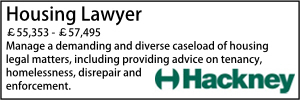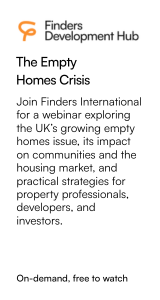Newham v Chaplair: the lessons to be learned
- Details
Archie Maddan explains what was involved in the first successful prosecution of a tower block owner for failure to remove flammable cladding.
Newham v Chaplair was a prosecution under s30 of the Housing Act 2004 for failure to comply with an Improvement Notice. Specifically Chaplair, which was the freeholder of the block of flats, failed to remove dangerous cladding by the deadline specified in the Improvement Notice.
Chaplair defended itself by raising the available statutory defence of having a “reasonable excuse” for the failure to meet the deadline. The trial was entirely concerned with whether the circumstances of the failure to carry out the works amounted to a reasonable excuse. The judge, Deputy Chief Magistrate Ikram, found that they did not.
Sentencing took place on 31 October, and Chaplair were ordered to pay a fine of £30,000 for the failure to remove the cladding as well as a substantial contribution to Newham’s costs. The cladding has all now been removed.
Background
Chaplair is the freeholder of a block of 71 flats in London E7 called the Lumiere Building. The building is a converted former office block. In around 2000 the building was converted into flats. The conversion included the addition of a new external skin which included a layer of insulation and outer cladding. The cladding used was partly composed of ACM aluminium composite material, virtually the same type as was fitted to Grenfell Tower. ACM is a sheet material made of a sandwich of two outer sheets of aluminium with a filling of polyurethane or polyethelene. In the case of Chaplair’s building, the ACM cladding was type 3 which is the most dangerous type and has the same calorific value as petrol (so would burn as quickly as petrol if it caught alight). The building also had HPL cladding and other features and products that rendered it unsafe.
The building had been placed on a watchlist by the government after the Grenfell Tower fire, and the minister Lord Greenhalgh had himself taken an interest in the case. There was considerable pressure on Chaplair to organise the removal of the unsafe cladding. However, there were delays in establishing that the block did in fact have very serious fire safety problems because this was not immediately accepted by Chaplair. These problems were only finally established in 2019 when a proper survey of the building was carried out.
Further delays were caused by issues with funding the removal of the unsafe cladding. The building only had 16 owner occupied flats out of 71 units, so there were many absent leaseholders who had significant concerns about the likely costs of remediation of the block. It is clear that obtaining public funding for the works became a priority for Chaplair over making the building safe. Chaplair did commence the s20 leaseholder process to seek funds from leaseholders but never pursued it with any vigour.
By 2020 there was growing concern on the part of central government, the London Fire Brigade and Newham Council because of the lack of any progress to make the building fire safe. Newham decided that it needed to act.
With the assistance of the Joint Inspection Team, Newham inspected the building and in September 2020 served a detailed Improvement Notice. This set two deadlines for works, the most important of which was a requirement that all the dangerous cladding should be removed by the end of March 2021 and the building made weatherproof pending the fitting of a replacement cladding system. It is this 31 March 2021 deadline which was ultimately missed by Chaplair, leading to the prosecution.
The law relating to improvement notices
Improvement notices can be appealed to the First Tier Tribunal by those served with them. The period for compliance or other requirements set out in the notice can be appealed if there are good reasons why these cannot, or should not, be met. The appeal period is 21 days from the service of the notice. If no appeal is made, then the notice becomes operative at the expiry of the appeal period. However, even after the initial appeal period has ended a person served with an improvement notice may apply to the First Tier Tribunal for permission to apply out of time to appeal the notice under the Housing Act 2004, HA 2004 Schedule 1 Part 3 para.14(3). No appeal was made in this case, either within the 21-day period or out of time.
Local Housing Authorities also have a power to vary an improvement notice that they have served under the Housing Act 2004, sections 16(4) & (8):
"16 Revocation and variation of improvement notices
(1) The local housing authority must revoke an improvement notice if they are satisfied that the requirements of the notice have been complied with.
(2) The local housing authority may revoke an improvement notice if–
(a) in the case of a notice served under section 11, they consider that there are any special circumstances making it appropriate to revoke the notice; or
(b) in the case of a notice served under section 12, they consider that it is appropriate to revoke the notice.
(3) Where an improvement notice relates to a number of hazards–
(a) subsection (1) is to be read as applying separately in relation to each of those hazards, and
(b) if, as a result, the authority are required to revoke only part of the notice, they may vary the remainder as they consider appropriate.
(4) The local housing authority may vary an improvement notice–
(a) with the agreement of the person on whom the notice was served, or
(b) in the case of a notice whose operation is suspended, so as to alter the time or events by reference to which the suspension is to come to an end.
(5) A revocation under this section comes into force at the time when it is made.
(6) If it is made with the agreement of the person on whom the improvement notice was served, a variation under this section comes into force at the time when it is made.
(7) Otherwise a variation under this section does not come into force until such time (if any) as is the operative time for the purposes of this subsection under paragraph 20 of Schedule 1 (time when period for appealing expires without an appeal being made or when decision to vary is confirmed on appeal).
(8) The power to revoke or vary an improvement notice under this section is exercisable by the authority either–
(a) on an application made by the person on whom the improvement notice was served, or
(b) on the authority's own initiative.”
A decision by a LHA regarding variation of an improvement notice may be appealed by the person who applied for variation under the Housing Act 2004 Schedule 1 Part 3 para. 13:
13(1) The relevant person may appeal to [the appropriate tribunal]1 against–
(a) a decision by the local housing authority to vary an improvement notice, or
(b) a decision by the authority to refuse to revoke or vary an improvement notice.
(2) In sub-paragraph (1) “the relevant person” means–
(a) in relation to a decision within paragraph (a) of that provision, the person on whom the notice was served;
(b) in relation to a decision within paragraph (b) of that provision, the person who applied for the revocation or variation.
Events following the service of the Improvement Notice
Chaplair did not appeal the Improvement Notice, and nor was any application made to vary it. Whilst there was one instance where there was an exchange of informal emails mentioning the possibility of reviewing the deadlines in the notice, this was never pursued by Chaplair or their professional advisors.
The Improvement Notice therefore remained in place and Chaplair worked with their own professional advisors (including solicitors and surveyors) to appoint contractors and to obtain public funding for the works. The process was not straightforward, but Chaplair was provided with professional assistance by central government to help guide them through the tendering and funding application processes.
Matters were progressing relatively well to start with. Willmott Dixon were in discussions with Chaplair to undertake the works for the removal and replacement of the cladding and applications for public funding to cover all or the majority of the costs were being considered by the Greater London Authority acting as agent for the government. However, in October 2020 Willmott Dixon told Chaplair that they were not willing to contract on the standard JCT terms. In particular, they were not happy to accept single point liability for sub-contractor failures including the design elements. Chaplair took legal advice and there was an exchange of lawyers’ communication between Willmott Dixon and Chaplair. This resulted in Chaplair deciding to abandon the tender negotiations with Willmott Dixon and to start again seeking different contractors willing to take on single point liability. Crucially this delay meant that the deadline for removal of the dangerous cladding could not be met, which is what led to the Improvement Notice being breached.
Chaplair asserted as their main defence that their decision to change contractors was reasonable and based upon legal advice that they should not enter into contract with Willmott Dixon without single point liability. There were also subsidiary defences based upon alleged delays in securing full public funding and construction permits for the adjacent railway.
The trial and judgment
The trial took 7 days and heard evidence for the prosecution from council officers, senior civil servants and external professional advisors appointed by the government to assist Chaplair with the tendering and public funding processes. Chaplair called their surveyor, a director of the company and unusually the solicitor who had advised regarding the contract negotiations with Willmott Dixon (thus waiving privilege regarding the advice they had received about the contract negotiations) to give evidence. The judge reserved his decision and ordered detailed written closing submissions. Judgment was given on Wednesday 22 October and Chaplair was found guilty.
The judge gave his reasons in a seven-page note of reasons making the following findings:
- The failure to appeal the notice or seek to vary it as circumstances changed, whilst not fatal to a reasonable excuse per se, was relevant to the consideration of the defendant’s actions, especially as they were advised by professionals throughout.
- The fact that Newham had not responded to an email from Chaplair’s surveyor agents requesting an unspecified extension was, on the facts, not relevant since the matter was not pursued by Chaplair despite them having opportunity to do so.
- The suggestion by Chaplair that Newham could have unilaterally decided to extend the deadline on the Improvement Notice was not reasonable on the facts since they were not kept fully informed by Chaplair of developments. Newham had insufficient information to make a unilateral variation to grant more time.
- The “reasonable course” would have been for a “detailed and direct appraisal of the situation” to Newham with actual proposals. This never happened – rather there was “ambiguity, lack of clarity and a lack of communication”.
- In respect of the decision to change contractors based upon legal advice, it emerged under cross examination that the solicitors advising Chaplair about the building contract were never told about the service of the statutory Improvement Notice and therefore didn’t know about the deadline for works and the risk of criminal sanction. The solicitors had not been told by either Chaplair or their surveyors. Whilst the judge could not go behind the advice given by the solicitors, in the specific circumstances of this case it had not been reasonable for Chaplair to simply follow that advice since it was based upon partial instructions which excluded the crucial matter of the Improvement Notice with a deadline.
- The decision by Chaplair not to pursue parallel funding routes from both public funds and leaseholders was not reasonable in the circumstances where there was a need to carry out works to ensure the safety of occupants of the building.
The sentence
The sentence handed down in this case was a fine of £30,000 and a contribution towards Newham’s costs. This takes into account the fact that the work set out in the Improvement Notice has now been carried out, so there is no ongoing breach.
The fine was calculated in accordance with the Sentencing Guidelines based on the size and financial resources of Chaplair. It was a reasonable fine within the parameters of what we felt should be awarded in this case.
Chaplair were also ordered to pay some of Newham’s costs. As is almost always the case with legal costs, Chaplair were not ordered to pay everything. In this case, the costs claim was high because of the amount of work which had to be carried out (this was the most complex and detailed Improvement Notice ever served and so required a huge amount of oversight). I have found that courts are sometimes unsympathetic to costs incurred by local authorities, and frequently do not order unsuccessful opponents to pay more than a contribution towards them. In addition, in this case the judge had to balance the level of costs against the level of the fine and to ensure that one was not disproportionate to the other.
What conclusions can be drawn from the case and the court’s judgment?
All reasonable excuse cases are unique to their own facts – however there are three clear conclusions which can be drawn from the judgment:
- Failure to appeal the notice during the initial 21-day period after service means that it is very difficult to later raise any matters that should properly have been raised on appeal at the time of service. Any matters that were within the knowledge of a party when served with an Improvement Notice should be raised as an appeal at that time. This is actually part of a wider and more important issue – seeing reasonable excuse within the broad statutory framework for improvement notices in the Housing Act 2004.
- In this case the failure by Chaplair to ask clearly for a variation to the Improvement Notice (which Newham had the power to give) counted against them. This is linked to the suggestion made at trial that Newham should have unilaterally varied the Notice; as the judge noted – Newham didn’t have sufficient information to know what was going on or to have varied a Notice designed to protect occupants.
- The argument raised by Chaplair that they relied upon legal advice in ending their first contractor negotiations might have been sufficient to amount to a reasonable excuse. Normally a party acting upon legal advice is entitled to rely upon that advice and that reliance will generally be reasonable. However, in this case the advice was flawed by Chaplair’s own decision not to tell its solicitors about the crucial matter of the Improvement Notice, a revelation that was quite a showstopper during the trial when it emerged in cross examination. Furthermore, disclosure during the trial of Chaplair’s solicitor’s attendance note detailing their original advice (which was a privileged document) was also quite a surprising step by the defence, since for the first time it confirmed to the prosecution legal team that their assessment of the contractual legal situation had been correct which allowed confident cross examination of the defence witnesses as to the actual effect of changing contractors. One practical point to note is perhaps not to put the defence solicitor into the witness box or to disclose his file notes!
So, what can one take away from this decision?
The primary lesson to be learned is that parties served with improvement notices under the Housing Act 2004 must take them seriously. It should really go without saying but it does appear that Chaplair and their professional advisors didn’t realise the importance of the Notice, or that Newham took the matter very seriously (with the support of central government).
If you are served with an improvement notice, make sure that you get specialist legal advice immediately. Specifically, you need to consider a challenge straightway if matters are disagreed with at the time of service – it is difficult to later raise matters that could have been raised at the time of service.
Keep the notice under review because parties served with an improvement notice can request variation at any time and have the right to appeal any refusal. This might allow you to get more time, or to amend the obligations. Again, it might be considered unreasonable only to raise matters later as part of a defence after a breach of a notice.
Don’t expect the body serving the notice to micromanage it, or to take steps to make it easier for you to comply. Newham were not expected to have unilaterally varied the notice that they had served when Chaplair ran into difficulties in complying.
If you are the party serving the notice, then be aware that your obligations do not end at the date of service. Parties can ask for variations at any time and clear responses should be given to any such request. Bear in mind the duties under the Regulators Code. If issues are raised by parties, deal with them quickly and keep notes in writing of any decisions made, since the same matters might reappear later as part of a defence of reasonable excuse.
Notices under the Housing Act 2004 part 1 are concerned with the protection of occupiers – especially post Grenfell. Failure to comply with them is serious. Real efforts have to be shown to have attempted to comply with the notice.
In this case the court had little sympathy for issues related to funding, and found that it is not acceptable to delay safety critical works to secure public funding. Alternative funding should have been pursued (for example seeking leaseholder funds under the s.20 procedure).
Conclusion
This is the first prosecution for failure to remove cladding - and may be the last given that many cladded buildings have now had this removed because of the safety concerns. There were complex underlying issues and facts in this case, but in essence the same considerations could be applied to any prosecution for failure to carry out the works under an improvement notice. If works are not carried out as ordered then a building owner had better have a compelling set of reasons for not having done so. Shopping around for preferential contract terms from contractors or waiting for public funding will not be acceptable as a reason to delay safety critical works such as cladding removal.
A party who feels they need a variation to a notice should ask the local authority for it, explain why it is required and be ready to appeal any refusal.
Housing authorities need to be aware that cladding replacement works are complex and often challenging. Latitude may be needed for those required to carry out this work, but it is important to drill down through any excuses for non-compliance. Don’t let the scale of the works or seemingly complex facts put off requiring building owners to explain in clear terms any delay in making buildings safe.
Archie Maddan is a barrister at 5 Pump Court.
Must read
Fix it fast: How “Awaab’s Law” is forcing action in social housing
Housing management in practice: six challenges shaping the sector
Why AI must power the next wave of Social Housing delivery
Sponsored articles
Walker Morris supports Tower Hamlets Council in first known Remediation Contribution Order application issued by local authority
Unlocking legal talent
09-12-2025 1:00 pm
11-12-2025 11:00 am







































